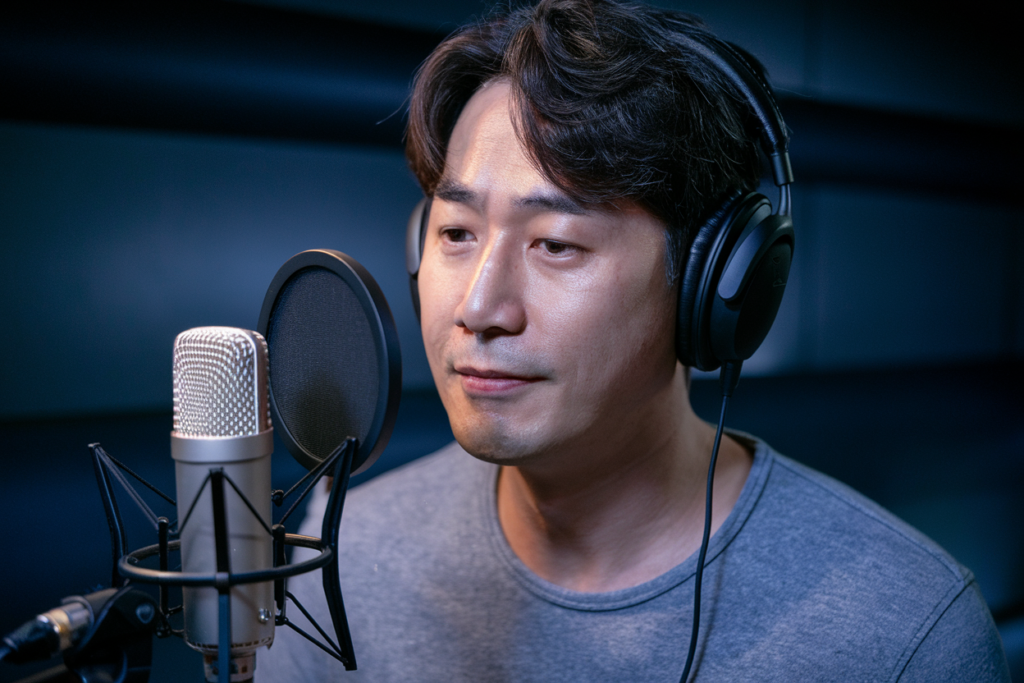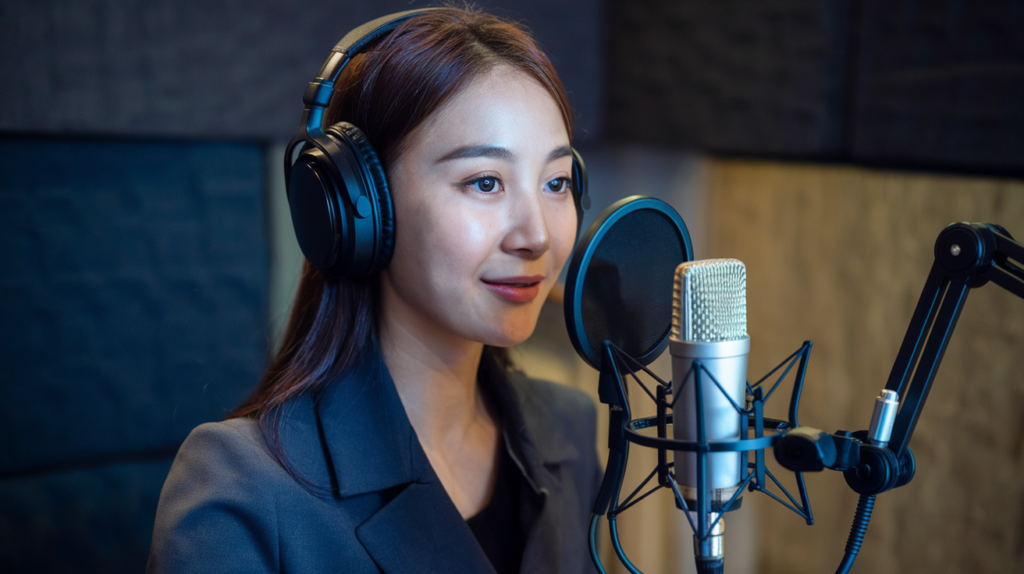Key Takeaways
- Understanding Dubbing: Korean dubbing replaces original dialogue with translated voiceovers to enhance accessibility but often faces lip sync challenges that affect viewer engagement.
- Historical Context: Dubbing began in the 1960s mainly for children’s content and has evolved to encompass various genres, emphasizing the importance of skilled voice actors.
- Common Issues: Lip sync problems include timing discrepancies, phonetic mismatches, inconsistent emotions, and cultural nuances which can disrupt immersion.
- Impact on Experience: Mismatched lip syncing detracts from emotional depth and authenticity in dramas, leading to viewer frustration and disengagement.
- Technological Advances: Innovations in audio editing technology facilitate better alignment between dialogue and visuals, improving overall quality in dubbing projects.
- Professional Practices: Collaborating closely with experienced voice actors and scriptwriters can minimize translation issues while enhancing emotional delivery for a more authentic viewer experience.
Ever watched a Korean drama and noticed how the characters’ lips don’t quite match their words? You’re not alone! Korean dubbing and lip sync issues can be a real buzzkill for viewers who crave that authentic experience.
Understanding Korean Dubbing
Korean dubbing involves the process of replacing original dialogue with translated voiceovers. This practice aims to make content accessible to a broader audience, yet it often encounters challenges that can affect viewer engagement.
Historical Context
Korean dubbing emerged during the 1960s, primarily in children’s programming. As television grew in popularity, so did the demand for dubbed content. Initially, local talent voiced over foreign shows and films to cater to young viewers. Over time, this practice expanded into various genres, including dramas and movies aimed at adults. Today, established voice actors bring life to characters through their unique skills and artistry.
Importance in Media
Dubbing plays a crucial role in how stories are presented across cultures. Authenticity matters; well-executed voiceovers enhance emotional connection and immersion for viewers. High-quality voice talent ensures that dialogues resonate effectively with the audience’s expectations while maintaining cultural nuances. It’s vital for success in global markets where audiences favor localized experiences without sacrificing quality or impact.
By focusing on accurate lip syncing and skilled voice artists, productions can elevate their narratives and engage viewers more deeply than ever before.
Common Lip Sync Issues
Lip sync issues in Korean dramas often disrupt the viewer’s experience, leading to frustration and reduced immersion. Understanding these problems can help you appreciate the importance of quality voiceovers.
Types of Lip Sync Problems
- Timing Discrepancies: Mismatched timing occurs when dialogue doesn’t align with mouth movements, creating a disconnect for viewers.
- Phonetic Mismatch: This happens when translated dialogue lacks phonetic compatibility with the original speech, resulting in awkward visual cues.
- Inconsistent Emotion: Voiceovers that fail to capture the characters’ emotions can lead to a disjointed viewing experience, as facial expressions don’t match vocal delivery.
- Cultural Nuances: Certain phrases or idioms may not translate well into Korean, causing lip sync challenges that affect authenticity.
Causes of Mismatched Sync
Mismatched sync often stems from various factors:
- Translation Challenges: Inaccurate translations can lead to longer or shorter dialogues than originally intended, affecting synchronization.
- Voice Artist Selection: The choice of voice artist impacts how closely their performance matches the original actor’s expression and tone.
- Editing Techniques: Poor editing practices during dubbing can create additional gaps between audio and video elements.
- Technical Limitations: Equipment or software limitations may hinder precise syncing capabilities during post-production.
Addressing these common issues enhances the overall quality of Korean dramas, ensuring a more engaging experience for audiences seeking authentic storytelling through effective voiceovers.
Impact on Viewer Experience
Lip syncing issues in Korean dubbing significantly affect viewer experience. When dialogue doesn’t match the lip movements, it disrupts immersion and authenticity, making it harder for audiences to connect with the story.
Audience Reception
Viewers often express frustration over mismatches between dialogue and mouth movements. They seek a seamless experience that feels genuine. If voiceovers don’t align properly, it detracts from the emotional weight of scenes and can lead to disengagement. Audiences expect high-quality productions where voice talent enhances storytelling rather than distracts from it. Positive reception hinges on effective synchronization; when done right, viewers appreciate how voice actors bring characters to life.
Cultural Perceptions
Cultural nuances play a vital role in how dubbing is perceived across different regions. In Korea, there’s an expectation for voiceover work that resonates with local sentiments while still conveying original intent. Mismatched lip sync can be seen as a lack of respect for the source material or cultural authenticity, which may alienate viewers looking for genuine representation. The effectiveness of dubbed content relies not only on translation accuracy but also on how well voice artists embody character emotions within cultural contexts.
Solutions and Techniques
Addressing lip sync issues in Korean dubbing requires innovative solutions and refined techniques. Focusing on technology and professional practices significantly enhances the quality of voiceovers.
Advances in Technology
Technological advancements play a crucial role in improving lip synchronization. Software tools now offer precise audio editing capabilities, allowing for better alignment of voice recordings with visual content. Automated syncing features help streamline the process, reducing discrepancies between dialogue and lip movements. Real-time feedback mechanisms enable voice artists to adjust their performances instantly, ensuring that emotional delivery matches character expressions seamlessly. With enhancements in artificial intelligence, future developments may even provide automated translations that respect cultural nuances while maintaining authenticity.
Professional Practices
Professional practices ensure high-quality voiceovers that resonate with audiences. Selecting experienced voice actors is vital; they understand the intricacies of emotive delivery and can adapt their performances to match character dynamics effectively. Scriptwriters should collaborate closely with directors to create dialogues that reflect both original intent and cultural relevance, minimizing translation challenges. Additionally, regular training sessions for voice talent enhance their skills in conveying emotion accurately while staying true to the source material.
Utilizing collaborative workflows fosters communication among production teams, leading to cohesive final products. Listening sessions where actors receive constructive feedback further refine performances, ensuring they align with audience expectations.
By embracing these technological advances and adhering to professional practices, you can elevate the overall quality of Korean dubbing projects, providing viewers an immersive experience that feels genuine and engaging.
Conclusion
Addressing lip sync issues in Korean dubbing is vital for enhancing viewer experience. By prioritizing accurate synchronization and skilled voice acting, you can foster a deeper connection to the narrative. Embracing technological advancements and professional practices will ensure that the emotional tone of the original content shines through.
As audiences increasingly seek authentic storytelling, it’s crucial to respect cultural nuances while delivering engaging content. Focusing on these aspects not only elevates the quality of Korean dramas but also positions them favorably in global markets. With commitment and innovation, you can help create an immersive viewing experience that resonates with viewers both locally and internationally.
Frequently Asked Questions
What is the main issue discussed in Korean dramas regarding dubbing?
The article highlights that mismatched lip movements and dialogue can detract from the viewing experience. This disconnect affects authenticity, making it challenging for audiences to fully engage with the story.
How did dubbing in Korean media begin?
Dubbing started in the 1960s, initially focusing on children’s programming. Over time, it has expanded to include various genres like dramas and movies aimed at adult audiences.
Why is quality dubbing important for viewer experience?
High-quality dubbing enhances emotional connection and immersion. When voiceovers align well with visuals, it helps viewers connect more deeply with the narrative.
What are common issues with lip syncing in Korean dramas?
Common problems include timing discrepancies, phonetic mismatches, inconsistent emotions in voiceovers, and cultural nuances that may not translate effectively.
What causes mismatched lip sync in Korean dramas?
Mismatches can stem from translation challenges, poor editing techniques, technical limitations, and selection of voice artists who may not match character portrayals accurately.
How do lip sync issues impact viewer engagement?
When dialogue does not match actors’ lip movements, it disrupts immersion and authenticity. Viewers often feel frustrated and find it harder to connect with the storyline.
What solutions are proposed for improving dubbing quality?
The article suggests using advanced audio editing tools for better syncing and employing experienced voice actors. Collaboration among production teams is also essential for enhancing overall quality.
How does technology play a role in improving dubbing practices?
Technological advancements enable precise audio editing and real-time feedback mechanisms, allowing voice artists to adjust their performances instantly for improved emotional delivery.
Why is cultural perception significant in Korean dubbing?
In Korea, there is an expectation that voiceover work resonates with local sentiments while conveying original intent. Poorly executed dubbing can be seen as disrespectful to source material.







